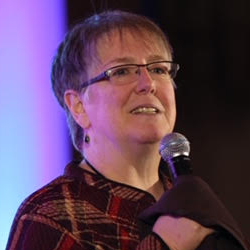
[Editor’s Note: EDRM is proud to amplify the resources of our Trusted Partners.]
The legal industry has earned its cautious reputation to “watch and wait” before adopting technology. But forward-looking organizations, the companies we work with and in the world around us, can’t move slow on technology adoption. The proliferation of digital media enables more ways to communicate faster and more effectively, and the implications for the legal industry are staggering.
To thrive, legal professionals need to keep their eyes on the horizon, track emerging trends, anticipate their impact, and prepare for the ever-changing new world.
As we look to 2023, Everlaw has identified five emerging legal tech trends. Some are precise changes, some more general trajectories than exact destinations. But all of them will shape the future of litigation and legal investigations in the years ahead.
5 Legal Tech Trends to Watch in 2023
1. The Cloud Cleaves Legal into a Growing Divide, with Risky Consequences
The contrast between those who do and don’t adopt the cloud will become even more apparent with greater economic headwinds in 2023. Leaders who have adopted cloud-based ediscovery solutions have an advantage in an industry based on time: Those in the cloud can generally move faster, collaborate in real time, and work more efficiently than their counterparts using on-premises ediscovery tools.
But Fitbits, bodycams, Rings, Apple Watches, and cell phones will soon form, in essence, a cocoon of data around each of us. That data will provide litigators with enough “eyes, ears and even heartbeats” to enhance our understanding of the context in every case and even help identify new witnesses.
Chuck Kellner
The choice between a cloud or on-premises ediscovery solution can have consequences to risk stance, impacting an entire legal organization from deployment, costs, efficiency, and future viability. For example, those who haven’t adopted cloud solutions may put their clients and business at risk by employing manual or disjointed processes. What organization can afford to be steps behind the competition?
2. Death of the Document: What Constitutes a Document Will Evolve as Evidence Takes on New Forms
The concept of the document – especially a printed one – is becoming outdated fast. Focusing ediscovery only on documents puts a spotlight on the container rather than the actual content. As this trend evolves, context and collaboration take on bigger roles in identifying what evidence is important. For example, transactional databases, long-running Slack conversations, and multimedia like recurring Teams meetings with attachments and changing participants become the new unit of measure, instead of the “four corners” of a document.
Evidence is no longer confined to documents or email. Enterprise chat platforms like Slack and Teams are becoming equal players in ediscovery employees seek out an easier way to communicate in real time for simple matters.
3. Lawyers Will Drop the Expectation That Every Document Requires Human Review
Read all of Chuck’s predictions here.


